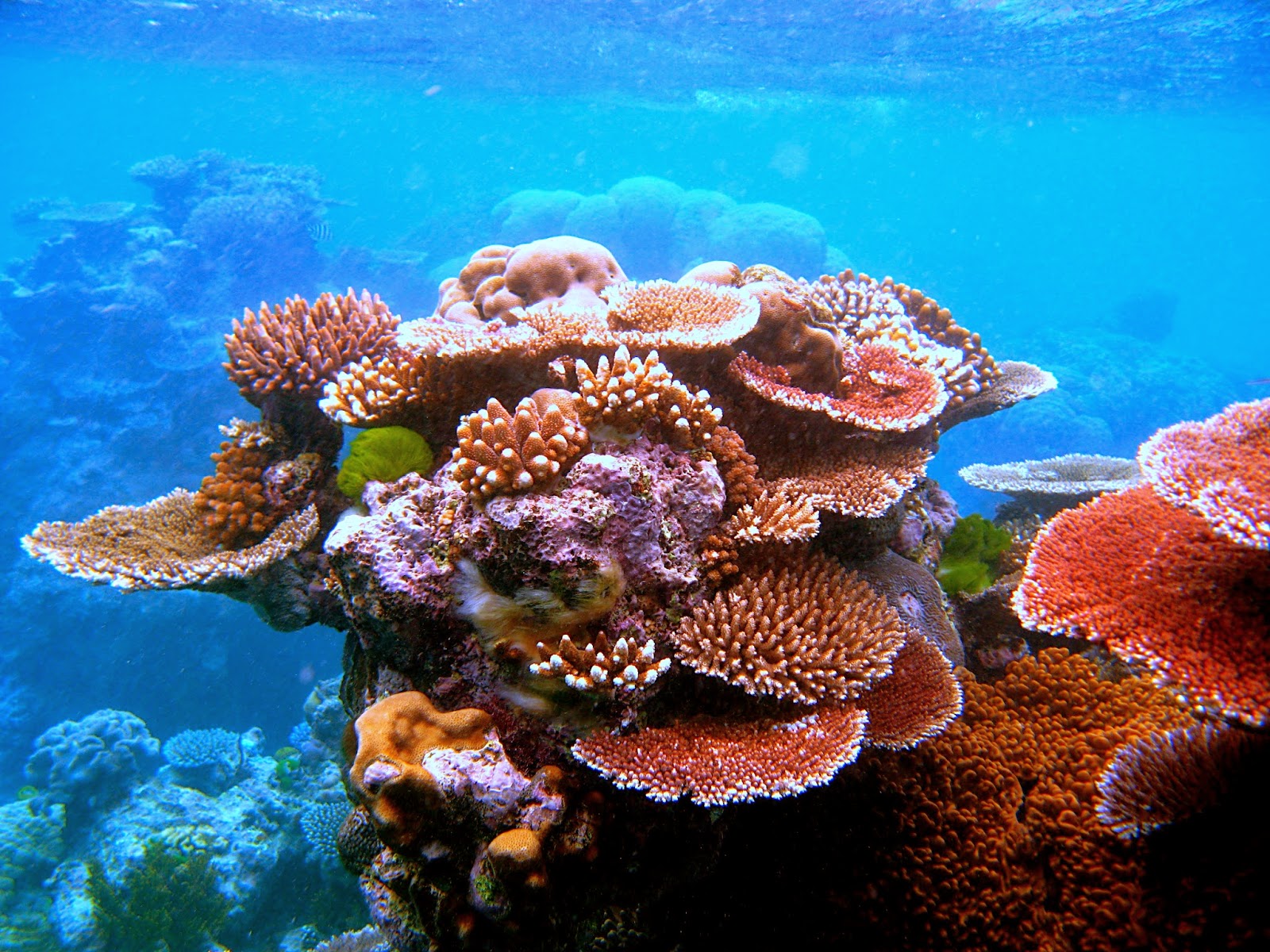Coral reefs, otherwise known as the rain forests of the ocean, is a community of living organisms made up of plants, fish, and a wide variety of other creates. Coral reefs is one of the most diverse, fragile, ecosystems in the world, and is home to nearly 25% of all marine life. Coral reefs play an important part for both marine life and people, as they bring in roughly 30-172 billion U.S dollars per year, providing food, protection of shorelines, boost tourism, and even can be used to make certain types of medicines.
Coral reefs also play a large role in breaking the power of waves during hurricanes, typhoons, storms, even tsunamis!
Coral reefs interact with the spheres of the universe as well.
HydrosphereThe hydrosphere consists of all the water on Earth, distributed through the water cycle. Coral reefs, being in the water, play an important role in the hydrosphere by staying intact and being healthy. Because corals obtain nutrients from plankton and other algae, they are able to distribute these substances into the water which help keep it filtered and wonderful. Water temperature affects corals tremendously because if the water gets too cold, then the coral will die, and if coral die, it will affect the hydrospheres ability to be fully productive.
GeosphereThe Geosphere is made up of all the Earth's layers, crusts, and rocks. Coral reefs serve as the barriers for large incoming waves, and as a result are able to prevent beaches from being damaged. If the coral reefs are threatened by beach erosion, this correlates with the geosphere's ability to be successful.
CryosphereThe Cryosphere is composed of all the ice on Earth. If the ice starts to melt into the water below (hydropshere), it will change the overall temperature of the water which could kill the very fragile coral reefs below.
BiosphereThe Biosphere is made up of all the living organisms on earth. Coral reefs are home to many organisms like fish, sponges, crabs, sea turtles, and a wide variety of other marine life. These coral reefs also provide shelter and food, while creating a balance in the water below. By having a thriving coral reef, the animals in the biosphere are able to thrive as well.
AtmosphereThe atmosphere is all the gases on Earth. Coral reefs have a symbiotic relationship with Zooxanthellae, algae, and are able to create oxygen that can go back into the atmosphere. When the algae pulls CO2 from the air, the carbon that is extracted from the air sitting on the ocean floor is able to be turn into oxygen used for respiration, which allows a cycle of oxygen flow.
While coral reefs provide a deal of benefits for our world and our economy, it is essential that they are protected, making sure they stay healthy and aren't destroyed by dredging or coral bleaching. In addition, making sure the water stays unpolluted and the erosion on land going into rivers lessens, the balance of the reefs can remain strong and healthy.
Works Cited
"Coral Reef Protection: What Are Coral Reefs?" Home. N.p., n.d. Web. 04 June 2014. <http://water.epa.gov/type/oceb/habitat/coral_index.cfm>.
"Coral Reefs." Coral Reefs. N.p., n.d. Web. 04 June 2014. <http://www.ecokids.ca/pub/eco_info/topics/oceans/coral_reefs.cfm>.
"NOAA's Coral Reef Information System (CoRIS) - What Are Coral Reefs." Coral Ecosystem Publications RSS. N.p., n.d. Web. 05 June 2014. <http://www.coris.noaa.gov/about/what_are/>.




No comments:
Post a Comment